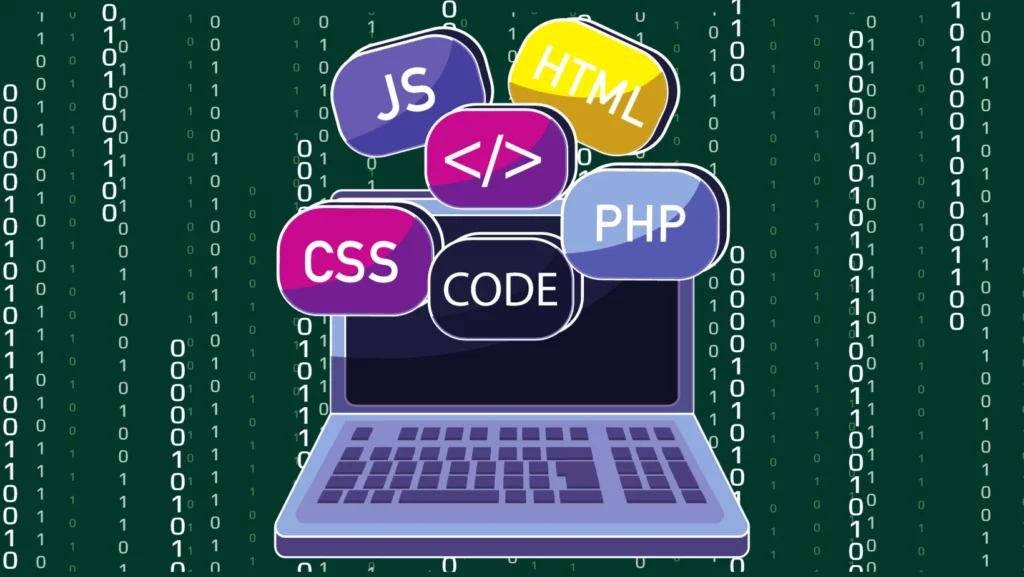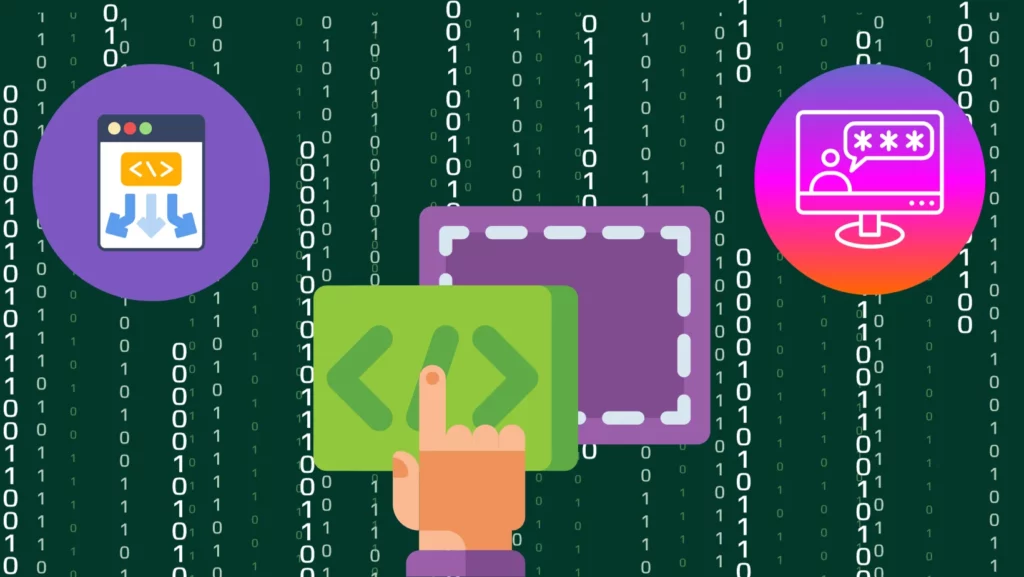Are you looking for ways to quickly and cost-effectively develop software solutions? Low-code development could be the answer. These applications empower users to design, build, and deploy their custom software without needing any coding skills or assistance from IT departments. Read on to learn the ins and outs of low-code platforms and explore 10 examples of their real-world uses and applications!
Table of contents
- Are you wanting to build something without hiring a development team?
- Overview of Low-code and Why it is Growing in Popularity
- Benefits of Using Low-code Platforms
- Automating Business Processes with Low Code
- 10 Examples of Low Code Applications and Uses
- Tips for Getting Started with Low-code Development
- Frequently Asked Questions About What Can You Build with Low-code: 10 Examples of Low Code Uses and Applications
- Conclusion
Are you wanting to build something without hiring a development team?
Low-code applications allow anyone to create and launch an app without having any coding knowledge. It’s the perfect way to get started on building your project, whatever it may be. With low-code, you can quickly develop custom applications with drag & drop components, and deploy them at scale across multiple platforms all within minutes!
Take the hassle out of complex development by deploying apps fast with fewer resources and in less time than traditional methods would require. Plus, using pre-built low-code templates could save even more time as users don’t have to code anything from scratch!
Did you know?
- 72% of IT leaders state that their ticket backlog interferes with strategic projects. In fact, they spend much of their time maintaining legacy systems
- Low-code developer salaries typically range between $108,491 – $122,388 depending on skills and experience
- 83% of CIOs struggle to hire staff to help meet increasing demands. The main gaps are in analytics, information management, and big data
Keep reading and explore 10 examples of what you can do with low-code! Let these examples jumpstart your ideas so that you can start building powerful solutions fast.
Overview of Low-code and Why it is Growing in Popularity

Low code development platforms are becoming increasingly popular as they offer businesses the ability to quickly create custom applications without needing a lot of technical expertise. By providing a graphical user interface (GUI), they enable users to construct their applications by dragging and dropping different components together, greatly reducing the time it takes to develop software solutions.
Low-code platforms also provide an alternative to traditional coding, making app development more accessible to people with limited technical skills. This has allowed companies of all sizes to rapidly develop & deploy applications without needing a large IT team or expensive software licenses.
Low code solutions also help businesses adapt quickly and efficiently to change, as they can make changes to their applications on the fly rather than having to create new ones from scratch.
Benefits of Using Low-code Platforms
Low-code tools and platforms offer many advantages for businesses of all sizes. Here are some of the key benefits:
- Low-code platforms drastically reduce development time, allowing you to quickly develop and deploy applications without needing to write complex code from scratch.
- They are also much more cost-effective than traditional coding, as they don’t require expensive software licenses or hiring a large IT team.
- Low-code applications are user-friendly and don’t need any coding skills, making them ideal for users with limited technical knowledge.
- Additionally, they make it easy to quickly adapt applications to changing demands and requirements without needing to create an entirely new solution from scratch.
The low-code development platform for business apps will save time and money, while still delivering high-quality results for your business.
Automating Business Processes with Low Code

Low-code systems can help businesses automate their processes without needing to write complex code. Some of the Business processes that can be automated with low code include:
- Employee onboarding & offboarding.
- Performance reviews & feedback.
- Project management & task tracking.
- Data entry & document management.
- Meeting scheduling & time tracking.
- CRM Tracking & customer relationship management.
- Sales pipeline management and follow-ups.
Low-code applications provide an easy way to build custom solutions for these processes, allowing you to quickly automate complex tasks and streamline operations. Customers can also benefit from a great user experience with these custom-made applications.
Automating business processes using low code will save you time, money, and resources, allowing your business to stay competitive in today’s ever-changing market.
10 Examples of Low Code Applications and Uses

Low code technology will continue to become an essential part of software development. Low-code apps are being used in many industries, from healthcare to finance.
Here are 10 examples of Low-code applications and uses:
1. Building web Apps
Low code platform enables developers to quickly create a modern web application without having to write any code. It allows you to design and customize the user interface, integrate cloud services, and deploy your app on multiple platforms. This is useful for businesses who need to quickly build a web application.
2. Creating Chatbots
Chatbots are becoming increasingly popular due to their ability to provide customer service and automate conversations. Low-code platforms can make it easier for developers to create custom chatbots by providing visual tools such as drag & drop components, allowing users to quickly design and deploy a chatbot without needing any coding skills.
3. Developing Mobile Apps
Create apps for both iOS and Android with low-code development tools. This mobile app can be used to launch marketing campaigns, provide customer service, and engage customers. Low code tools make mobile app development faster than ever before while still maintaining high-quality standards.
4. Generating Data Visualizations
Data visualizations can help businesses gain insights from their data and make better decisions. Low-code solutions enable developers to quickly generate powerful data visualizations without needing any coding knowledge. This makes it easier for non-technical users to learn from their data and take action.
5. Enhancing Financial Processes
Financial processes can be extremely complicated and require a lot of manual work. Low-code solutions make it easier to automate financial processes such as payments, invoicing, and reconciliation. This makes it much simpler for businesses to manage their finances efficiently without having to hire an entire IT team.
6. Automating Workflows
Low-code platforms can help you automate and streamline workflows, reducing the manual effort required. Create custom forms for users to collect data, create automated emails to send out notifications, and set up rules to alert people if any changes are made. This makes it easier for teams to stay organized and productive.
7. Designing Cloud Service
Another application of low-code solutions is creating cloud services. This enables businesses to quickly launch a web service, manage users, and secure their data without needing any coding knowledge. Low-code platforms make it easier to get the most out of cloud services while keeping costs down.
8. Developing AI Solutions
Low code makes it easier to develop AI-powered solutions. With low-code tools, developers can quickly design custom applications that can collect data, sort through large amounts of information, and make predictions without needing to write complex code. This is useful for businesses that need to automate mundane tasks and save time.
9. Creating IoT Applications
Low-code solutions can help developers rapidly create IoT applications. These applications can be used to monitor and collect data from connected devices, enabling businesses to gain insights and take action quickly. Low code makes it easier for developers to integrate IoT systems into their existing applications.
10. Augmented Reality Experiences
Low code can also be used to create augmented reality experiences. Develop custom applications that allow users to interact with 3D objects in real time, visualize products on their faces or bodies, and simulate experiences without needing any coding skills. This makes it easier for businesses to engage customers and stand out from the competition.
Low-code solutions are becoming an essential tool for businesses of all sizes to create custom applications and automate processes. It enables developers to quickly create powerful solutions without needing complex coding skills, allowing businesses to stay competitive in today’s market.
Tips for Getting Started with Low-code Development

Citizen developers can start using low-code development tools to create powerful solutions for their business needs.
Here are some tips on getting started with low-code development:
1. Research and Pick the Right Platform
The first step is to research and pick the right platform for your project. Make sure that it meets all of your requirements and supports the features you need. You should also look for a platform that provides tutorials and guides to help you get started.
2. Learn the Basics
Once you have chosen a platform, take some time to learn the basics of low-code development. This will involve understanding how the platform works, learning about its features, and exploring the tools available.
3. Experiment with Simple Projects
Start small by experimenting with simple projects and familiarizing yourself with the platform. This will help you learn the basics of low-code development and get comfortable using the platform before tackling more complex tasks.
4. Build on Your Knowledge
Once you have gotten comfortable with the basics, start exploring more advanced features and tackling more complex tasks. This will help you get the most out of the low-code platform and gain a deeper understanding of how to use it for your projects.
From no code to full-stack development, low-code platforms make it easy for businesses and developers to create powerful applications quickly. With the right platform and knowledge, you can get started on your low-code journey today!
Frequently Asked Questions About What Can You Build with Low-code: 10 Examples of Low Code Uses and Applications
Q: What are the differences between No-code platforms and Low-code platforms?
A: No code platforms are for users who don’t have any coding experience, and allow them to create applications such as websites and mobile apps without needing to write any code. Low-code platforms provide more advanced features, allowing developers to build powerful solutions with a few lines of code.
Q: How can businesses use low-code solutions?
A: Businesses can use low-code solutions to quickly create applications, automate processes, design cloud services, generate data visualizations, and develop AI solutions. Low-code platforms make it easier for businesses to stay competitive in today’s market.
Q: What are the important factors to consider when selecting a low-code platform?
A: When selecting a low-code platform, it is important to consider the features offered, the cost of the platform, scalability options, customer support, and integration capabilities. It’s also important to make sure that the platform meets all of your requirements and supports the features you need for your project.
Conclusion
Low code is a powerful development tool capable of bringing a range of new applications to life. Low code technology is often much faster than traditional development approaches, not to mention more cost-effective in the long run. Of course, there are still limitations when it comes to optimizing user experience and customizing interactivity – but with the right combination of skills and tools, there are no limits to what you can build with low code.
These 10 examples of how low-code can be used have shown the potential behind this technology and its ability to reshape business operations. Whether you’re a solo entrepreneur or part of an enterprise, it’s time to reconsider the possibilities for innovative solutions delivered in a fraction of the time thanks to the wonders of low code.

